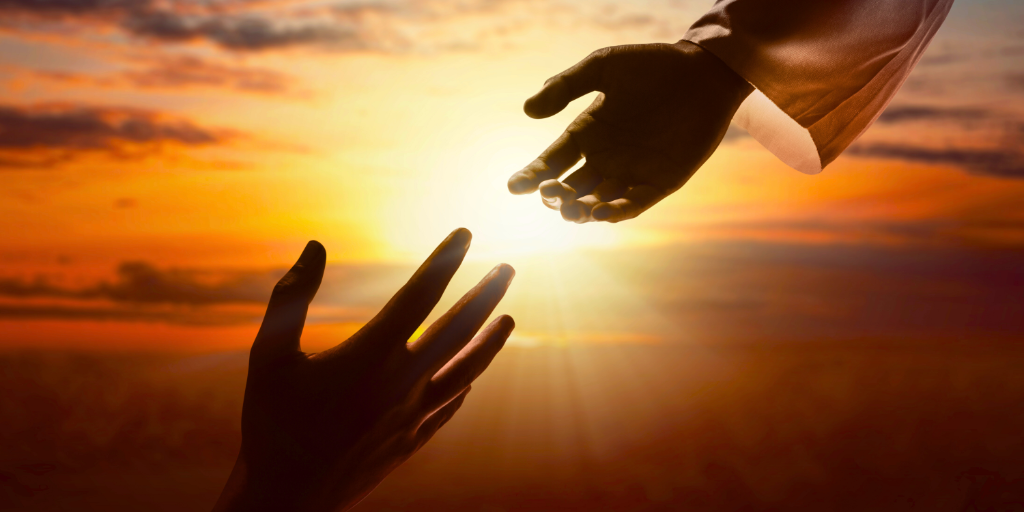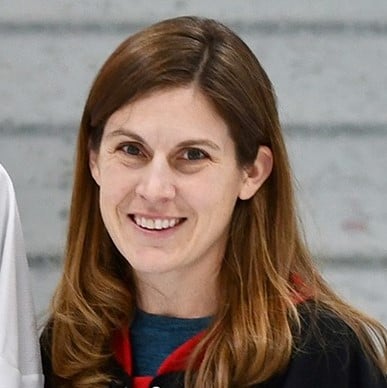
Kimberly Andrich reflects on Jesus’ Ascension to Heaven with His human body and ponders what that means for us.
Over the past few months, various circumstances have reminded me of my own humanity and woundedness and also, somewhat separately, of my children’s vulnerability and their reliance on me. This combination has frequently made me feel inadequate, sorrowful, and, at times, alone.
Our lives contain an overlapping blend of joy, sorrow, and concern. Even when things are going well, we often have a few nagging questions or worries hanging out in the back of our minds, and sometimes we can feel uncertain and alone with those questions.
Our Lord, however, graciously gives us several gifts to remind us that we are not alone in our sorrow and concern. Reminders that He is here with us. I am thinking today, especially in this Easter season leading up to Pentecost, of His presence with us in the Eucharist and through the Holy Spirit.

As we celebrate the feast of the Ascension of Our Lord, I am reflecting also on another gift.
I think it is interesting and quite profound that, when Jesus ascended into Heaven before the eyes of His disciples, He did so still united to His human body (Acts 1:9-11, Luke 24:51, Mark 16:19).
The Incarnation, God becoming man, was not only for the 33 years in which the Son walked the earth, but is for all eternity.
The Catechism of the Catholic Church tells us:
Christ’s ascension marks the definitive entrance of Jesus’ humanity into God’s heavenly domain, whence he will come again. (CCC 665)
Jesus remains one of us, even as He is also God and even as He is seated at the right hand of the Father in glory. And He will return in the same way in which He ascended — in human form.
Jesus’ human body, though glorified, retains the wounds that He sustained on the cross and that He presented to Saint Thomas (John 20:27). His humanity retains the sensitivity from which He wept with and for those who mourned Lazurus’s death and the compassion He had for the widow of Nain when He saw her weeping for the loss of her son (John 11:33-35, Luke 7:12-13).
We have a Savior who, in key ways, remains like us and maintains this strong tie to us and to our humanity.
As we are reminded of our own wounds, we can look to His and unite ours to His — not just in the past but still now, both in the present time and in eternal time.
As we cry for our children, we know He cries too, not just because He remembers what it once felt like to be saddened but because His human heart weeps alongside ours, and because He loves us and our children with a profound love that is, at the same time, both human and divine.

Jesus’ sacrifice was once and for all, but His wounds are still open for us. His Heart still pours out blood and water to purify us and wash us clean. And His very being still laughs and weeps with us and longs for us to draw near to Him.
So let’s do that. Let’s draw near to our Savior, our Redeemer, our Lord and Brother, pressing our wounds to His and placing all our concerns, laid bare, before Him. Let’s laugh with Him and cry with Him. And let’s entrust everything to Him, knowing that He cares for us and for our loved ones with a love that remains, always and forever, both human and divine.
Share your thoughts with the Catholic Mom community! You'll find the comment box below the author's bio and list of recommended articles.
Copyright 2024 Kimberly Andrich
Images: Canva
About the Author

Kimberly Andrich
Kimberly Andrich is a wife and a mother of 5, to two big boys and three little ladies. She enjoys deep conversations over a cup of hot tea and twilight walks with her husband. Kimberly writes from the perspective of having a hidden, chronic illness and experiencing a deep, continuous conversion through being yoked to Jesus in the day-to-day trials and joys of life. Follow her on Instagram @FallingOnHisGrace.


.png?width=1806&height=731&name=CatholicMom_hcfm_logo1_pos_871c_2728c%20(002).png)
Comments